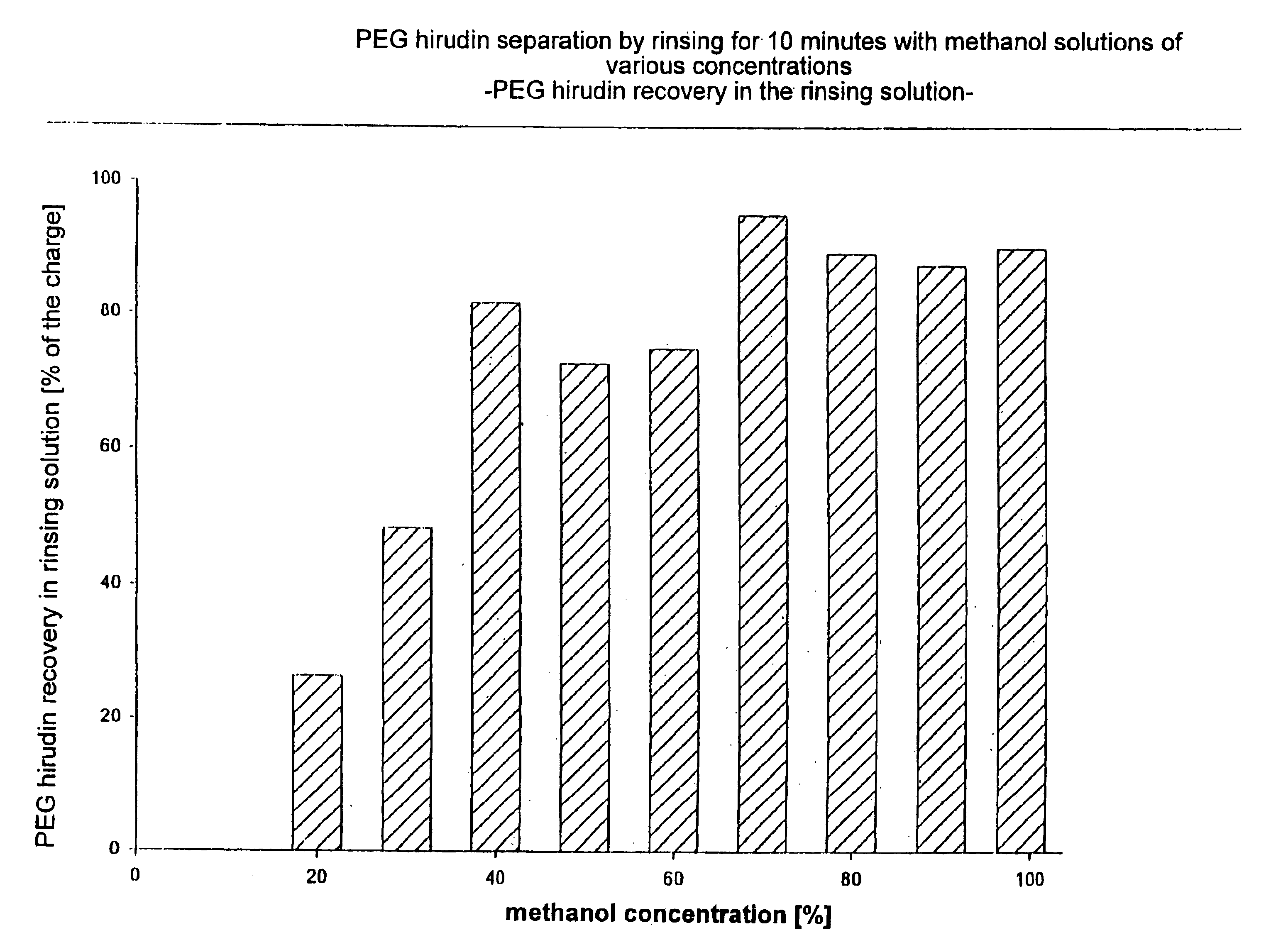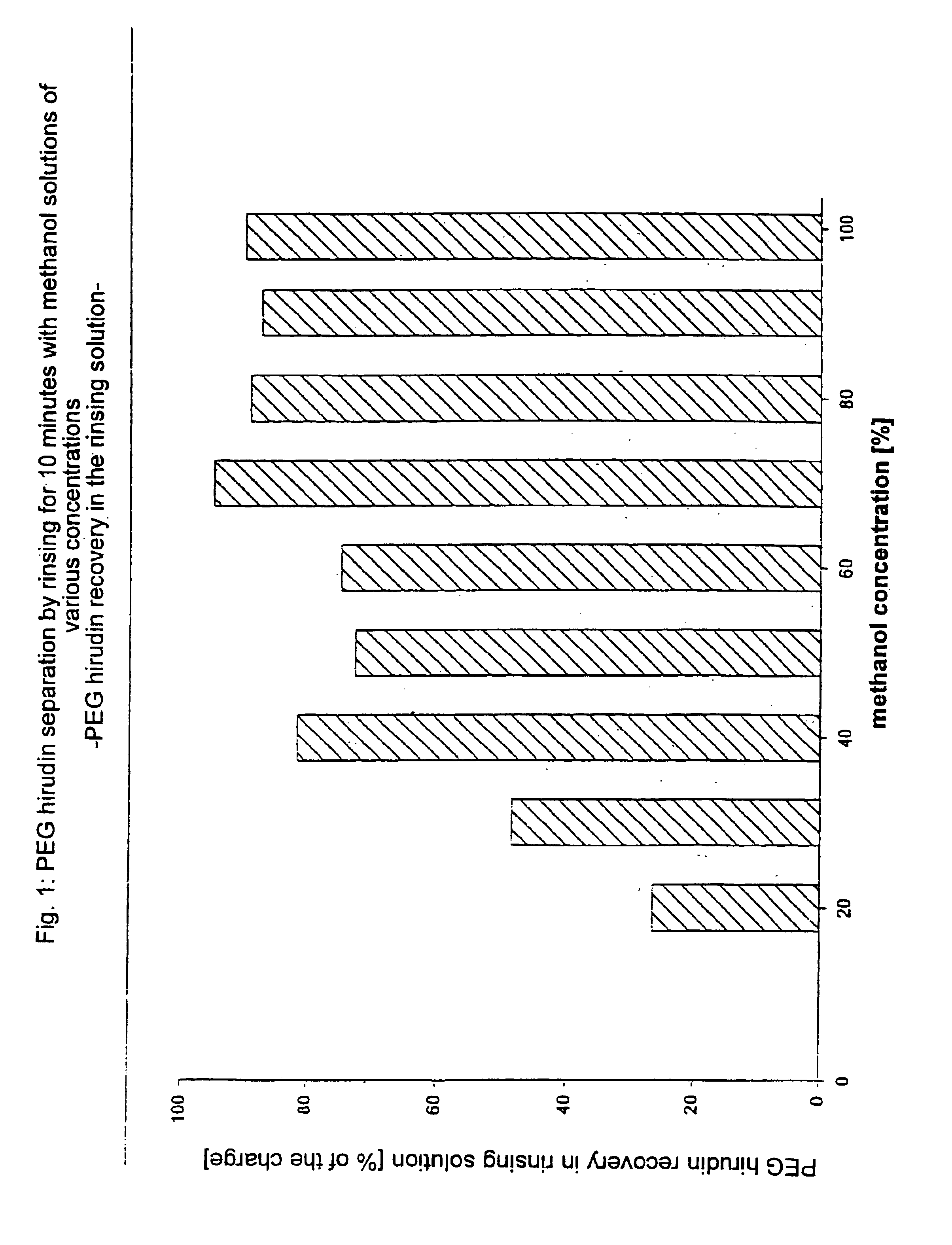Separation process
a separation process and process technology, applied in the field of separation process, can solve problems such as potential complications and side effects, and achieve the effect of reusability of all components
- Summary
- Abstract
- Description
- Claims
- Application Information
AI Technical Summary
Benefits of technology
Problems solved by technology
Method used
Image
Examples
example
Separation of the Peg Hirudin Bond to Polymethylmethacrylate
(PMMA) Particles
Porous PMMA particles are charged with PEG hirudin in two batches. Subsequently a 10-minute rinsing process is carried out either using a methanol solution at different concentrations or, in comparative tests, using physiological salt solution (NaCl). The rinsing solutions are tested for separated PEG hirudin via a biological detection of the hirudin function and are then recovered.
After the rinsing of the particles, their loading capacity is tested by recharging with PEG hirudin solutions. The PEG hirudin recovered from the methanol rinsing solutions is also tested for its bonding capacity with PMMA particles.
By means of dilutions with a methanol concentration of up to 40%, more than 80% of the surface-bound PEG hirudin can be separated and recovered during only 10 minutes of rinsing (Tab. 1; FIG. 1).
The reusability of both purified particles and recovered PEG hirudin is demonstrated in FIG. 2. 50.5 million...
PUM
| Property | Measurement | Unit |
|---|---|---|
| temperature | aaaaa | aaaaa |
| concentration | aaaaa | aaaaa |
| polar | aaaaa | aaaaa |
Abstract
Description
Claims
Application Information
 Login to View More
Login to View More - R&D
- Intellectual Property
- Life Sciences
- Materials
- Tech Scout
- Unparalleled Data Quality
- Higher Quality Content
- 60% Fewer Hallucinations
Browse by: Latest US Patents, China's latest patents, Technical Efficacy Thesaurus, Application Domain, Technology Topic, Popular Technical Reports.
© 2025 PatSnap. All rights reserved.Legal|Privacy policy|Modern Slavery Act Transparency Statement|Sitemap|About US| Contact US: help@patsnap.com



